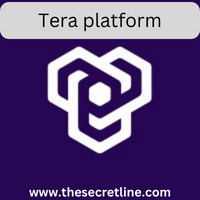Introduction:
In the dynamic landscape of careers and creative endeavors, a well-curated portfolio serves as a powerful tool for professionals across various industries. Whether you’re an artist, designer, writer, developer, or any other creative professional, your portfolio is your digital showcase, representing your skills, expertise, and personal brand. In this guide, we’ll delve into the art of crafting a compelling portfolio that captivates audiences and opens doors to new opportunities. In a world where first impressions can make or break opportunities, your portfolio stands as your virtual handshake—an introduction to your capabilities, style, and professionalism. It’s not just a gallery of your work; it’s a strategic showcase designed to resonate with your intended audience and propel your career forward. Whether you’re an aspiring graphic designer aiming to land your dream job or a seasoned writer seeking to attract high-profile clients, the principles of portfolio crafting remain universal.
1. Understanding the Purpose of Your Portfolio:
– Defining Your Objectives: Before diving into the creation process, it’s essential to clarify the goals you aim to achieve with your portfolio. Are you seeking freelance opportunities, showcasing your work to potential employers, or attracting clients for your business?
– Identifying Your Target Audience: Tailoring your portfolio to resonate with your intended audience is key. Consider who you want to impress—whether it’s fellow professionals, recruiters, potential clients, or a combination thereof.
-Your portfolio is your personal narrative in the professional world—a visual story that articulates your journey, expertise, and aspirations. Before embarking on the creation process, take a moment to define your objectives clearly. Are you aiming to secure freelance gigs, impress potential employers, or establish your brand as a sought-after creative? Identifying your goals will serve as the North Star guiding your portfolio creation journey.
-Equally crucial is understanding your target audience. Are you tailoring your portfolio to resonate with fellow creatives, recruiters, potential clients, or a blend of these? Recognizing who you’re speaking to allows you to tailor your portfolio’s content and presentation to make the greatest impact.
2. Selecting Your Best Work:
– Quality Over Quantity: Resist the temptation to include every piece you’ve ever created. Instead, focus on showcasing a select few works that best demonstrate your skills, creativity, and versatility.
– Diversity and Depth: Aim for a balanced portfolio that highlights a range of projects, styles, and techniques. This not only showcases your adaptability but also provides insight into the depth of your expertise
-In a sea of creations, quality reigns supreme over quantity. Tempting as it may be to showcase every project you’ve ever undertaken, exercising discernment is key. Curate a collection of works that not only showcase your technical prowess but also reflect your creativity, innovation, and versatility.
-A diverse portfolio not only demonstrates your adaptability but also provides a comprehensive snapshot of your capabilities. Strive for a balance of projects, styles, and techniques that collectively paint a vivid picture of your expertise and artistic range.
.
3. Organizing Your Portfolio:
– Cohesive Presentation: Your portfolio should tell a coherent story about who you are as a professional. Arrange your work in a logical sequence, considering factors such as chronology, thematic relevance, or project type.
– Intuitive Navigation: Ensure that your portfolio is user-friendly and easy to navigate. Visitors should be able to explore your work seamlessly, whether they’re viewing it on a desktop computer or a mobile device.
-Your portfolio should unfold like a well-structured narrative, guiding viewers on a journey through your professional evolution. Consider factors such as chronology, thematic relevance, or project type when arranging your work. The goal is to create a seamless flow that highlights your strengths and achievements. Your portfolio should be intuitively navigable, allowing visitors to explore your work effortlessly. Whether accessed on a desktop or mobile device, ensure that your portfolio’s layout and navigation are user-friendly and intuitive.
4. Showcasing Your Process:
– Behind-the-Scenes Insights: Providing glimpses into your creative process can add depth to your portfolio and offer valuable insights to prospective clients or employers. Consider including sketches, drafts, or case studies that highlight your problem-solving abilities and thought process.
– Client Testimonials and Success Stories: Incorporating testimonials from satisfied clients or employers can bolster your credibility and provide social proof of your skills and professionalism.
-Behind every masterpiece lies a story of ideation, iteration, and refinement. Providing insights into your creative process not only adds depth to your portfolio but also offers valuable context to potential clients or employers. Consider including sketches, drafts, or case studies that showcase your problem-solving skills and innovative thinking.
-Testimonials and success stories serve as powerful endorsements of your expertise and professionalism. Incorporating feedback from satisfied clients or employers not only bolsters your credibility but also provides social proof of your skills and reliability.
5. Embracing Visual Appeal and Branding:
– Visual Cohesion: Pay attention to the overall aesthetic of your portfolio. Consistent branding elements such as color schemes, typography, and imagery help create a cohesive and memorable impression.
– Attention to Detail: Presentation matters. Ensure that your portfolio is visually polished and free of distractions or technical glitches that could detract from the viewer’s experience.
-Your portfolio is an extension of your brand identity. Consistency is key in establishing a strong visual presence. Pay attention to elements such as color schemes, typography, and imagery to ensure visual cohesion across your portfolio.
-Presentation matters. You should be visually polished and free of distractions that could detract from the viewer’s experience. Invest time in refining the layout, formatting, and overall aesthetics to create a visually engaging showcase of your work.
6. Staying Relevant and Updated:
– Regular Maintenance: Your portfolio is a living document that should evolve with your career. Regularly update it with your latest work, achievements, and experiences to keep it fresh and reflective of your current skills and interests.
-Your portfolio is a dynamic entity that should evolve alongside your career. Regular maintenance is crucial to keeping it fresh and reflective of your current skills and interests. Make it a habit to update your portfolio with your latest work, achievements, and experiences.
-Stay attuned to industry trends and technological advancements. Experiment with new formats, tools, or platforms to ensure that your portfolio remains competitive and resonates with contemporary audiences.
Conclusion:
Your portfolio is more than just a collection of your work—it’s a reflection of your professional identity and aspirations. By carefully curating and presenting your best work in a compelling and cohesive manner, you can leave a lasting impression on potential clients, employers, and collaborators. Keep refining and updating your portfolio as you grow in your career, and let it serve as a testament to your passion, talent, and dedication:Your portfolio is your calling card in the digital age—an ever-present ambassador showcasing your talents, skills, and professional journey. By crafting a portfolio that is not only visually stunning but also strategically curated, you can leave a lasting impression on those who encounter it. Remember, your portfolio is more than just a collection of projects; it’s a reflection of your passion, dedication, and unwavering commitment to excellence. So, polish it, refine it, and let it shine as a beacon of your creative potential and professional prowess.





